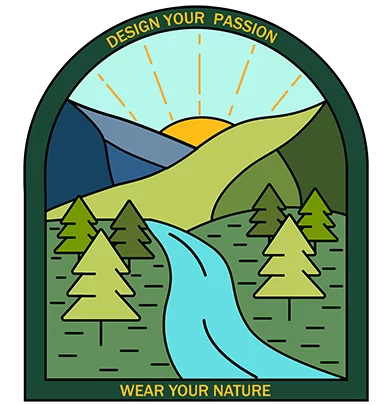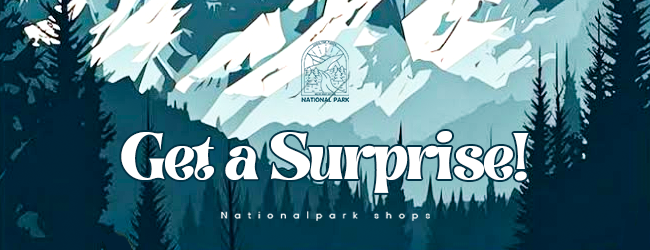Size isn’t everything when it comes to national parks, but if you’re wondering which one takes the crown as the largest national park in the US, we’ve got you covered. From massive, remote wilderness areas to tiny protected gems, we’ve compiled the most up-to-date data and ranked all 63 national parks by size, far easier to follow than sifting through the national parks by size Wikipedia list.
Whether you’re prepping for trivia night or planning your next big adventure, this guide reveals which parks sprawl for miles and which are surprisingly small, regardless of their popularity or accessibility. So let’s explore in detail with National Park Shops through the following article.
Everglades National Park
- State: Florida
- Size: 1,508,938 acres
- Equivalent: 75 Walt Disney Worlds
Ranking as the 10th largest national park in the US, Everglades National Park stretches across the southern tip of Florida and offers far more than just alligators and buzzing mosquitoes. This remarkable landscape is an ecological treasure, celebrated for its sprawling wetlands, intricate mangrove forests, and rich biodiversity. The Everglades’ vast network of wetlands serves as a vital sanctuary for numerous bird species and functions as a natural filtration system, playing a key role in maintaining water quality across the region.
Surrounding the park are additional protected areas that expand its ecological reach, including the 729,000-acre Big Cypress National Preserve, one of the first national preserves ever established in the United States. While it may not claim the top spot as the largest national park in the US, the Everglades holds its own as a globally significant ecosystem, one that captivates scientists, conservationists, and nature lovers alike.

Wrangell-St. Elias – Alaska
- State: Alaska
- Size: 8,323,146 Acres
- Equivalent: Bigger than Massachusetts and Connecticut combined
Spanning a staggering 8.3 million acres, Wrangell–St. Elias National Park & Preserve isn’t just vast, it’s monumental. When you add the additional 4.8 million acres of preserve land, the sheer scale becomes almost unimaginable, firmly establishing it as the largest national park in the US by far. In fact, Wrangell–St. Elias holds the title of the largest national park in the US, and remarkably, it also ranks as the largest national park in the entire world.
The park derives its name from two towering giants: Mount St. Elias, which soars over 18,000 feet, and Mount Wrangell, one of the few active shield volcanoes in North America. This extraordinary expanse is home to nine of the sixteen tallest peaks in the United States, all rising where three massive mountain ranges converge. The park’s geological drama continues with four awe-inspiring glaciers, some of the longest, largest, and most active in the country, offering a front-row seat to nature’s icy power.
Beyond its mountains and glaciers, Wrangell–St. Elias tells a deeper story through historic mining sites, sprawling icefields, abundant wildlife, and opportunities for paddling and exploration that barely scratch the surface of what this colossal wilderness offers.
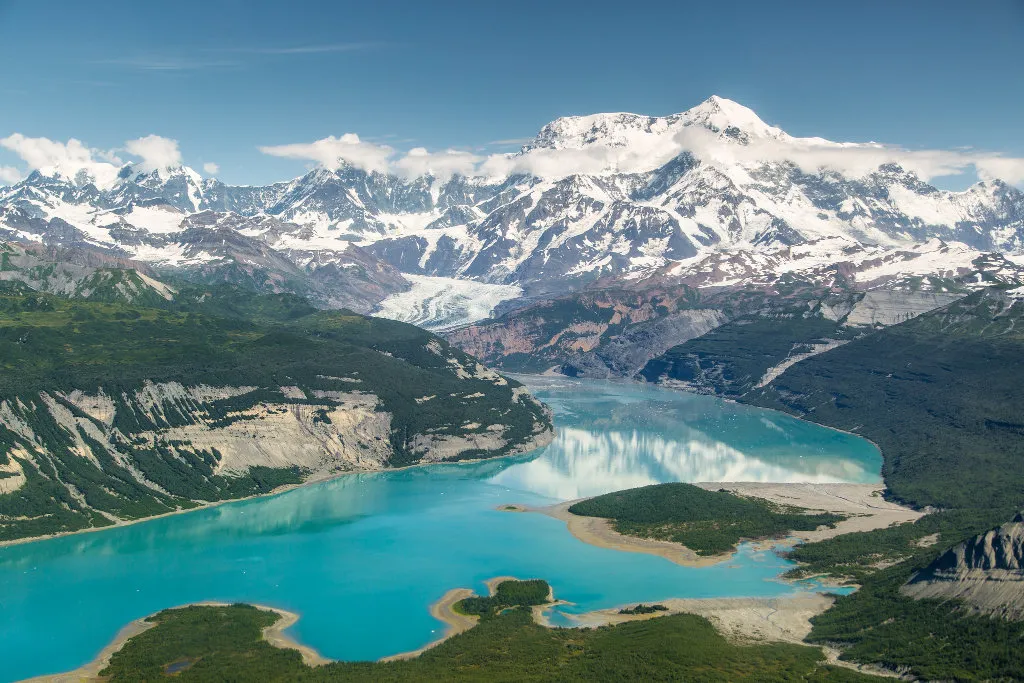
Gates of the Arctic, Alaska
- State: Alaska
- Size: 7,523,897 Acres
- Equivalent: 14 Great Smoky Mountains National Parks or more than 5 Everglades National Parks
Exploring America’s second-largest national park by area means venturing into a land with no roads, no trails, only sweeping, awe-inspiring vistas for those bold enough to take on the challenge. As the least-frequented national park in the United States, this remote gem isn’t being marketed to casual tourists. In fact, the park rangers issue clear advisories that prompt everyday hikers to reconsider their plans.
Within this immense stretch of pristine wilderness lies a rare sense of solitude, perfect for those seeking true backcountry discovery. Its name originates from the river valley framed by Frigid Crags and Boreal Mountain. Notably, it stands as the only national park situated north of the Arctic Circle. Bob Marshall, captivated by “blank spaces on maps,” coined the name in the 1920s during his quest for untamed terrain.
The park’s designation – both as a national park and a preserve – was never intended to draw crowds, but rather to shield the land from oil exploration and secure its wild essence indefinitely. Though it is not the largest national park in the US, it shares the same spirit of protection and preservation that defines those vast natural sanctuaries. The official status came to life under President Jimmy Carter’s leadership in 1978. In preserving this terrain, the legacy of the largest national park in the US continues to echo through every untouched corner.
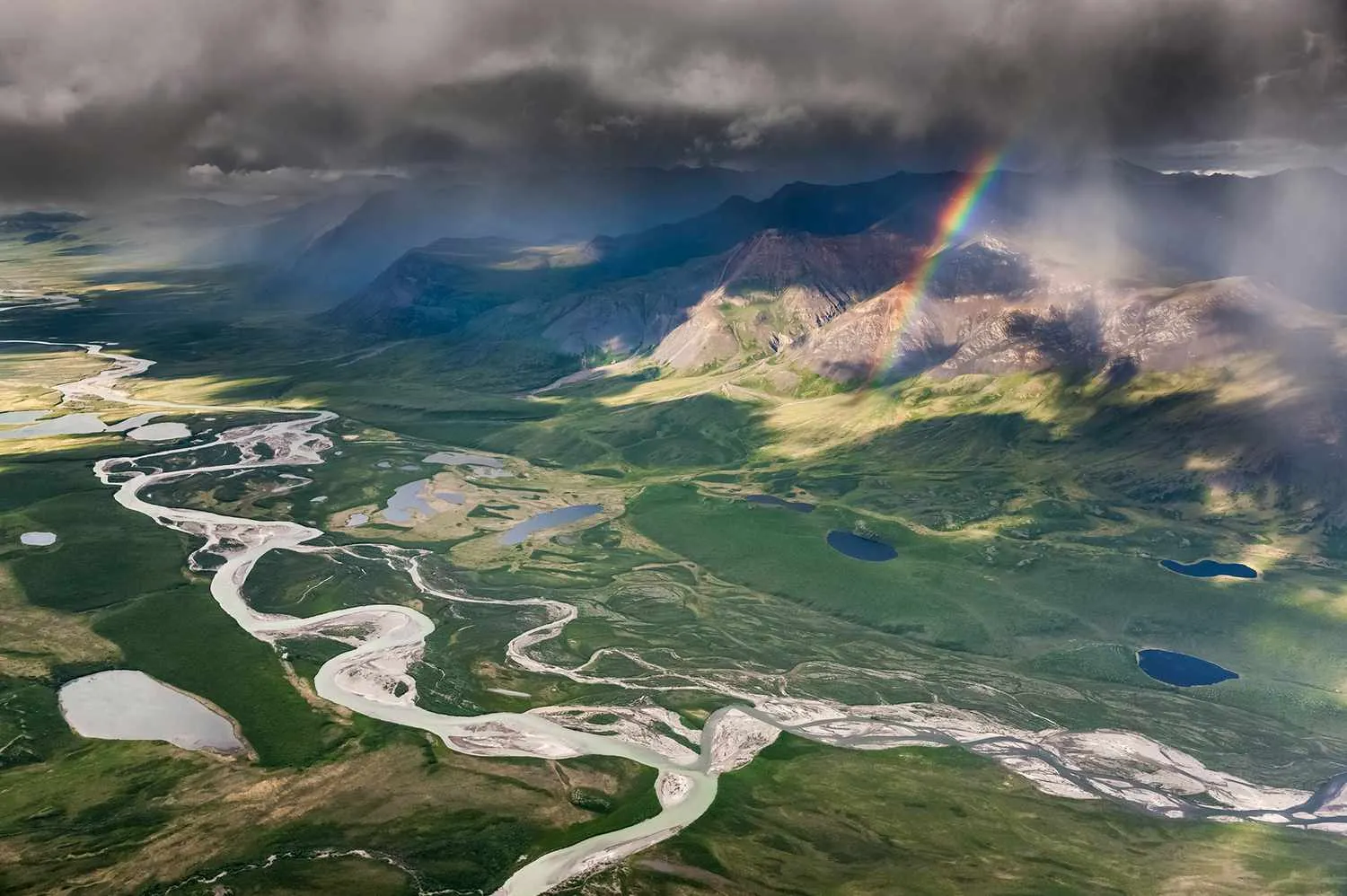
>> Read More: Dog Friendly National Parks: Best U.S. Parks to Visit
Death Valley, California
- State: California/Nevada
- Size: 3,408,395 acres (110,000 acres in Nevada)
- Equivalent: 12% Larger than Los Angeles County
Though it ranks fifth among the largest national parks in the U.S. by size, Death Valley National Park holds a legendary reputation as the hottest place on Earth and the driest region in North America.
In spite of its unforgiving climate, the park teems with surprising biodiversity, from hardy desert flora to tenacious wildlife uniquely adapted to survive. It dazzles visitors with vibrant spring wildflowers, even as summer monsoons threaten flash floods, adding drama to the desert’s already intense character.
With its surreal landscapes, punishing heat, and rare geological wonders, Death Valley offers an experience unlike any other, provided travelers steer clear of its searing summer extremes. While it may not be the largest national park in the US, its striking contrasts and raw natural energy make it one of the most unforgettable. Echoing the vast spirit of the largest national park in the US, Death Valley stands as a testament to nature’s resilience and beauty.

Yellowstone National Park, Wyoming
- State: Idaho, Montana, Wyoming
- Size: 2,219,790 acres (About 66,593 acres in Montana and 23,000 acres in Idaho)
- Equivalent: More than twice the size of Rhode Island
A beloved gem among national park enthusiasts, Yellowstone claims the eighth position on the list of the largest U.S. national parks by size. Established in 1872 as the world’s very first national park, Yellowstone is a geothermal marvel spanning more than 2.2 million acres across Wyoming, Montana, and Idaho. Its dramatic landscape features iconic geysers, steaming hot springs, and simmering mud pots, most famously, the ever-predictable Old Faithful.
But Yellowstone is more than thermal splendor. It’s home to an extraordinary range of ecosystems, from dense woodlands to high-altitude meadows, teeming with wildlife like bison, elk, grizzlies, and wolves. The park’s natural beauty shines through in landmarks such as the Grand Canyon of the Yellowstone and the expansive Yellowstone Lake.
While it may not hold the title of the largest national park in the US, Yellowstone proudly stands as the second-largest in the Lower 48 states, and uniquely, the only park to land in both the most visited and largest national park in the US top ten lists, blending scale with universal appeal.
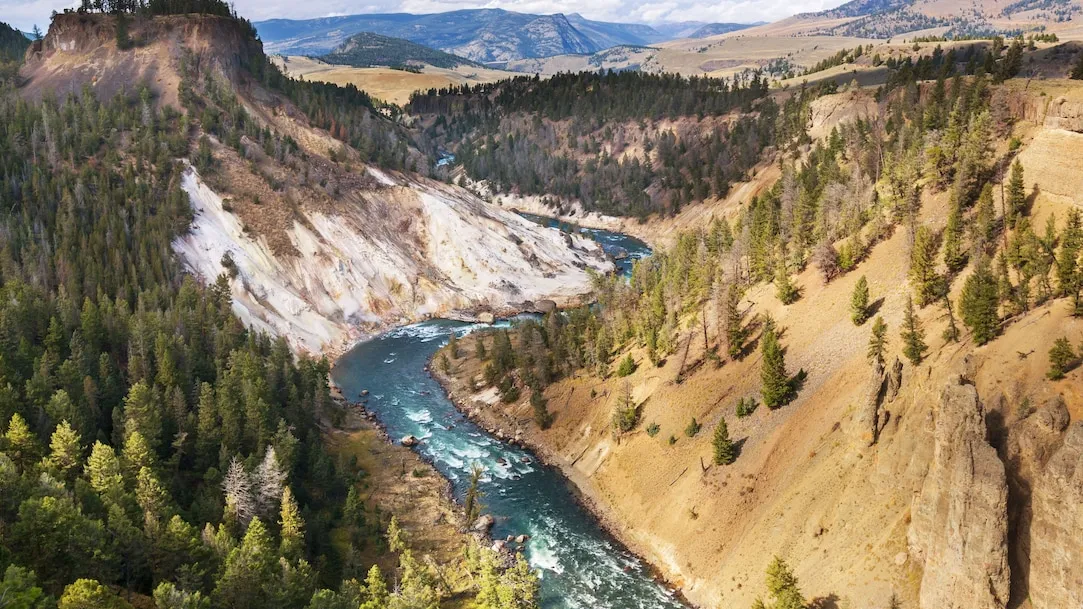
Kobuk Valley National Park
- State: Alaska
- Size: 1,750,716 acres
- Equivalent: Almost four Maui islands
Coming in at number nine on the list of the largest US national parks by size is Kobuk Valley National Park in Alaska, a remote treasure that remains one of the nation’s least visited, with only 260,124 visitors since its designation in 1982.
Covering 1.75 million acres of untouched wilderness, the park showcases sweeping sand dunes, dense boreal forests, and the winding Kobuk River – all set against the rugged charm of the Arctic. It offers a rare opportunity to experience the stark, powerful beauty of the far north in its purest form.
Yet, reaching this isolated haven is no simple task. Travelers must endure extensive logistics, multiple flights, and significant costs just to arrive. Exploring this roadless backcountry also demands skill, preparation, and a resilient spirit. Though it lacks the notoriety of the largest national park in the US, Kobuk Valley holds a quiet majesty that echoes the same wild grandeur. It stands as a humbling reminder of how vast and inaccessible parts of the largest national park in the US can truly be.
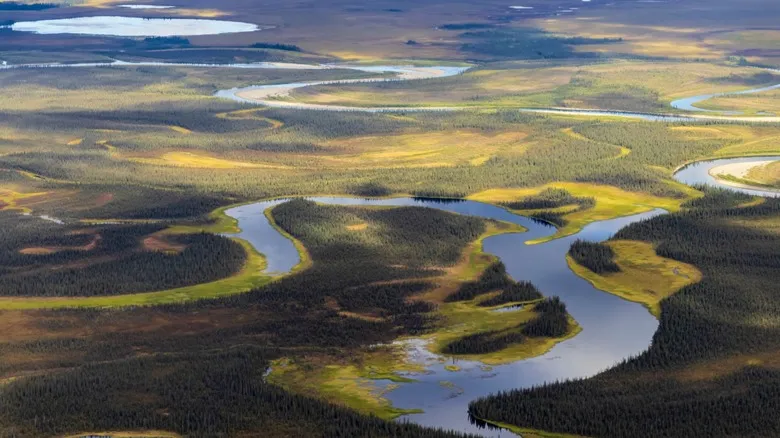
>> Read More: Easy Hiking Trails: Top 15 Scenic Routes For Beginners
Lake Clark National Park
- State: Alaska
- Size: 2,619,816 acres
- Equivalent: 18 Zion National Parks
Alaska’s Lake Clark National Park and Preserve is a breathtaking wilderness sanctuary that stretches across 4 million acres of incredibly varied landscapes. Of this vast area, 2.6 million acres are designated as national park territory, placing it as the seventh largest national park in the US.
Established in 1980, Lake Clark sits at the meeting point of the Aleutian Range and the Alaska Range. As part of the Pacific Ring of Fire, the park contains two active volcanoes. The four largest glaciers surrounding Iliamna Volcano hold three times as much snow and ice as Mount Rainier.
This remarkable park is a blend of snow-covered peaks, clear turquoise lakes, wild coastlines, and thriving green forests. Named after Lake Clark, the park does not honor William Clark of the Lewis and Clark expedition. Instead, it recognizes John W. Clark, a pioneer who dedicated his life to exploring the Alaskan frontier.
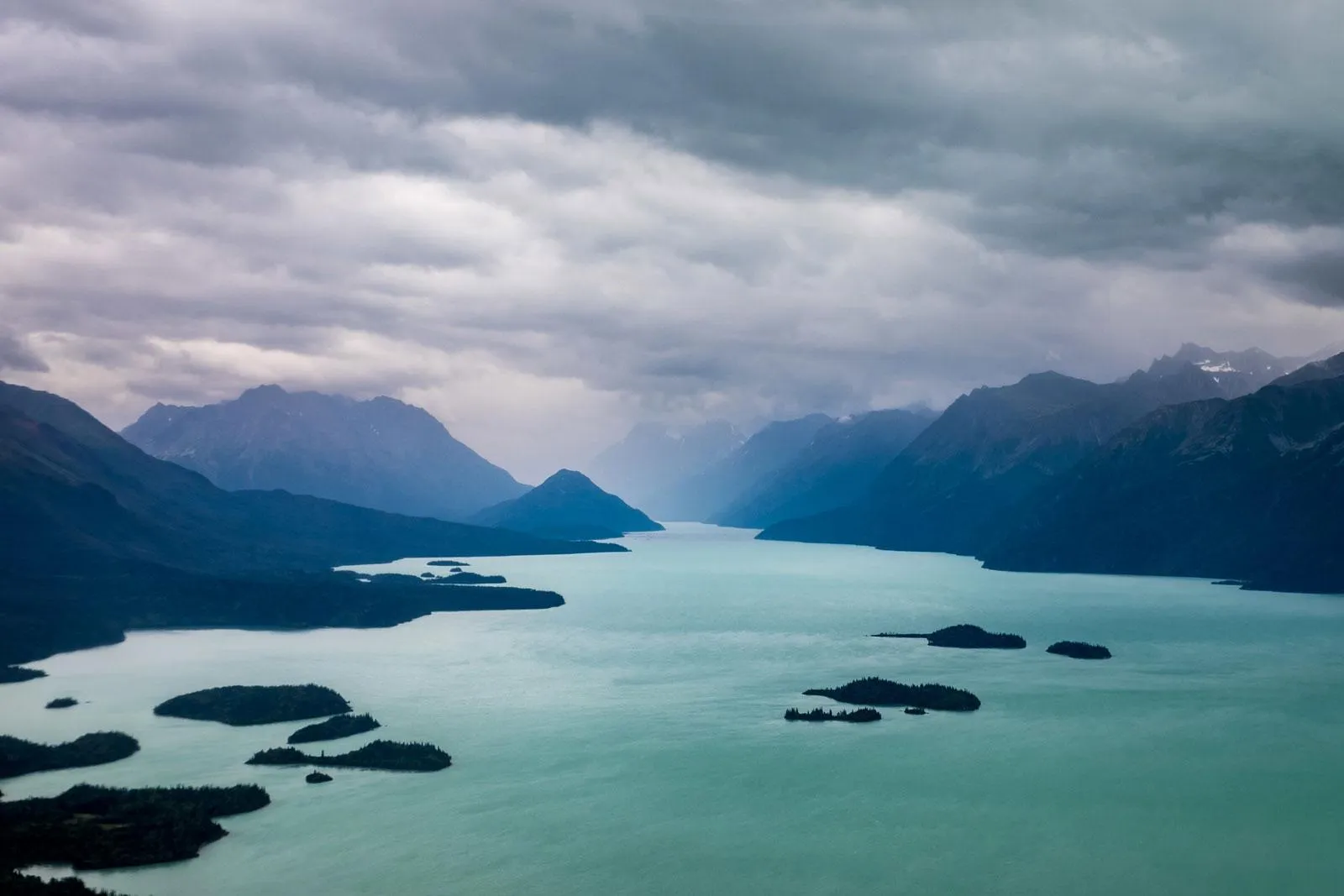
Glacier Bay National Park
- State: Alaska
- Size: 3,223,383 acres
- Equivalent: Slightly larger than Connecticut
Holding the impressive title of sixth place on the list of the largest US national parks by size, Glacier Bay National Park stands out in a remarkable way. Around 20 percent of its area is water, and no part of the park lies more than 31 miles from the sea, creating a landscape defined by its close connection to the ocean.
At the heart of the park is the breathtaking Glacier Bay itself, where visitors can witness the awe-inspiring sight of glaciers calving into the water and icebergs drifting across the surface. Towering mountains, including the majestic Mount Fairweather, rise to heights over 15,000 feet, adding dramatic elevation to this coastal paradise.
The park’s rich ecosystems range from dense temperate rainforests to vibrant marine environments, supporting an impressive variety of wildlife such as humpback whales, grizzly bears, and bald eagles. This biodiversity thrives in a setting where land and sea blend seamlessly.
Despite its remote location and limited infrastructure, Glacier Bay attracts more visitors than all other national parks in Alaska combined. The reason is cruise tourism. Each cruise ship that enters the park’s waters counts every passenger as a visitor, even if they never set foot on land.
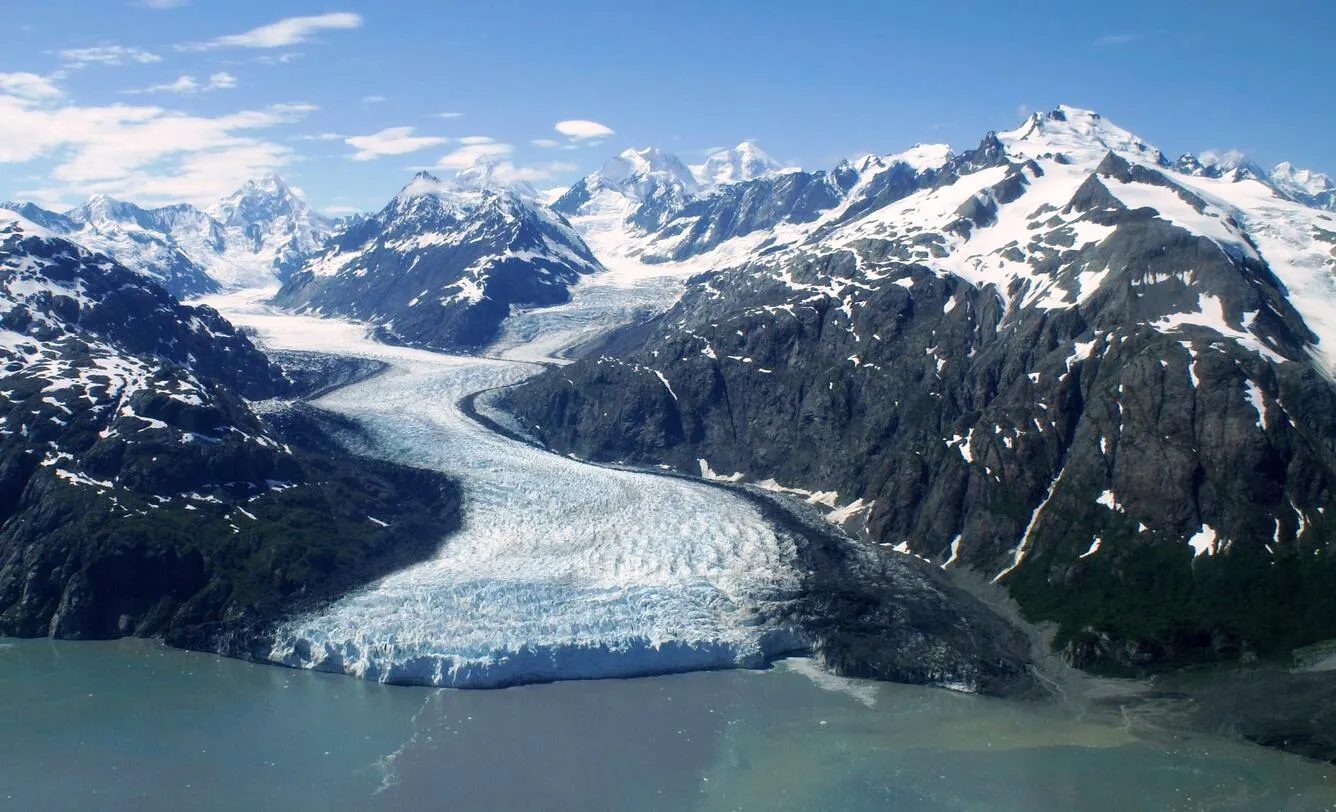
>> Read More: 11 Best Winter Hiking Trails In The USA for Explorers
Katmai National Park
- State: Alaska
- Size: 3,674,529 Acres
- Equivalent: Size of 4 Olympic National Parks
Ranked as the fourth largest national park in the US by size, Katmai National Park is famously home to some of the world’s most iconic grizzly bears, particularly the celebrated “Fat Bears” that draw crowds during salmon season. The national park itself covers nearly 3.7 million acres, and when you add in more than 418,000 acres of protected national preserve, the total swells beyond four million acres. Even with the full area counted, Katmai’s position on the list remains unchanged.
Though the bears are the main attraction today, it was the 1912 eruption of Novarupta that originally etched Katmai into geological history. This eruption is another record holder within the park, being the largest volcanic event of the twentieth century and one of the five most powerful eruptions ever documented by humans. Its explosive force was ten times greater than that of Mount St. Helens, transforming the once modest landscape into the dramatic Valley of Ten Thousand Smokes and elevating Mount Katmai into a place of global geological significance.

Denali National Park
- State: Alaska
- Size: 4,740,911 Acres
- Equivalent: The size of New Jersey
Home to the tallest peak in North America, Denali National Park claims the third spot among the largest national parks in the US. Denali, meaning “the high one” or “the great one” in the Indigenous language of the region, was officially renamed from Mount McKinley in 2015. Rising to a staggering 20,310 feet, the mountain watches over an untouched landscape of forests, tundra, and vast glaciers.
Reaching the park by road from Anchorage takes just four hours, a level of accessibility that helps explain why Denali welcomes more visitors than most other parks in Alaska. It stands as the second most visited national park in the state, following Glacier Bay.
From mountaineering and hiking to dog sledding, snowmobiling, camping, and guided bus tours, Denali offers an array of adventures for every kind of explorer. However, travelers should be aware of ongoing closures and repairs related to the Pretty Rocks Landslide, which has made a significant portion of the road inaccessible. Although Denali is not the largest national park in the US, it mirrors the awe-inspiring scale and diversity found in the largest national park in the US.

Gates of the Arctic National Park
- State: Alaska
- Size: 7,523,897 Acres
- Equivalent: 14 Great Smoky Mountains National Parks or more than 5 Everglades National Parks
Exploring the second-largest national park in the US means venturing into a land without roads or established trails, where only the boldest adventurers are rewarded with breathtaking, untouched vistas. As one of the least-visited national parks in the country, this remote wilderness remains deliberately wild, with rangers offering no encouragement for casual tourism. In fact, posted warnings strongly urge most hikers to reconsider making the journey.
This immense and unspoiled landscape provides rare solitude and boundless opportunities for deep wilderness exploration. The park takes its name from the river valley that lies between Frigid Crags and Boreal Mountain. It is also the only national park located entirely north of the Arctic Circle. The name was coined in the 1920s by Bob Marshall, who was drawn to unexplored “blank spaces on maps.”
Its designation as both a national park and a preserve was never intended to promote tourism, but rather to safeguard the land from oil development and permanently preserve its wild essence. This protection became official under President Jimmy Carter’s administration in 1978. While it may not be the largest national park in the US, its scale and isolation evoke the same raw majesty found in the largest national park in the US, securing its place as one of America’s most awe-inspiring natural sanctuaries.
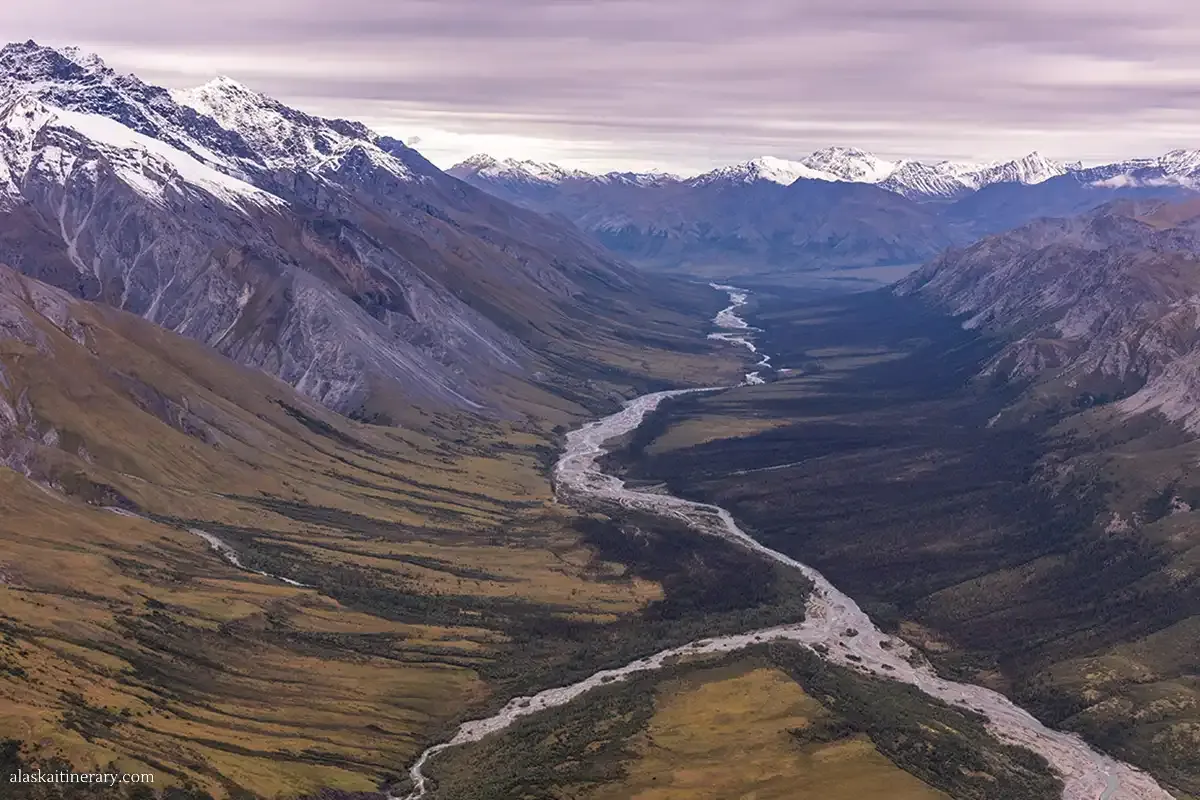
Conclusion
Wrapping up, the largest national park in the US is more than just a vast expanse of wilderness—it’s a true testament to nature’s grandeur and diversity. From towering glaciers and rugged mountains to historic mining sites and abundant wildlife, this park offers a once-in-a-lifetime experience for adventurers, photographers, and anyone seeking solitude in the great outdoors.
So when you’re ready to explore the wildest corners of America, don’t overlook the magic waiting in the largest national park in the US.
>> Read More:
